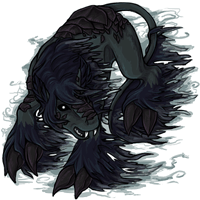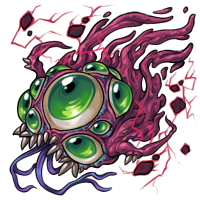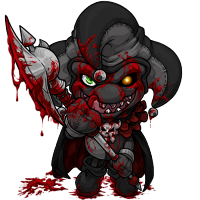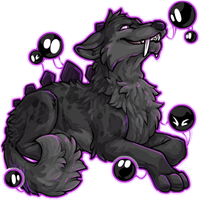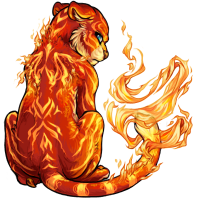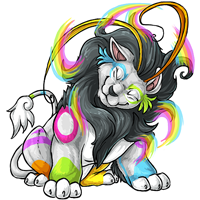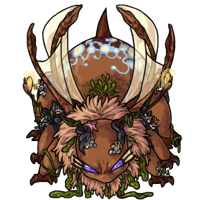Information
DaleEarnhardt has a minion!

Dale Jr the Endeavling

Dale Jr the Endeavling
DaleEarnhardt
Legacy Name: DaleEarnhardt
The
Owner:
Age: 17 years, 5 months, 3 weeks
Born: December 5th, 2006
Adopted: 17 years, 5 months, 3 weeks ago (Legacy)
Adopted: December 5th, 2006 (Legacy)
Statistics
- Level: 1,156
- Strength: 1,915
- Defense: 1,934
- Speed: 1,928
- Health: 2,068
- HP: 2,068/2,068
- Intelligence: 846
- Books Read: 300
- Food Eaten: 3
- Job: Stock Worker
Ralph Dale Earnhardt was the most popular driver in NASCAR history, thanks in large part to the aggressive driving style that earned him the nickname The Intimidator.In his career, Earnhardt won 76 races and 7 Winston Cup Championships, tying him with Richard Petty for the most championships of all time. He died, on February 18, 2001, in the last turn on the last lap of the Daytona 500.
Ralph Dale Earnhardt was born on April 29, 1951 in Kannapolis, North Carolina, to Ralph Lee Earnhardt and Martha Coleman. His father was one of the early stars of NASCAR, and was chosen as one of the 50 Greatest NASCAR Drivers. Born into the racing world, young Dale wanted very much to follow in his father's footsteps and dropped out of school at age 16 to pursue racing, much to his fathers dismay.
Earnhardts early career was marked by struggles to find the money to race and raise his family, which included a son, Kerry, who would go on to have mediocre success as a NASCAR driver. Ralph Earnhardt died of a heart attack in 1973, at age 45, and the death was said to have deeply affected Dale, and served as a motivation for him to succeed on the track just as his father had.
Earnhardt began his Winston Cup career in 1975, finishing 22nd in the World 600 at Charlotte Motor Speedway in a car owned by Ed Negre. He competed sporadically in Winston Cup races until 1979, when he got his first full-time ride driving for owner Rod Osterlund.
1979 would prove to be Earnhardts breakout year in NASCAR, as he captured Rookie of the Year honors, won his first race on April 1st at Bristol Motor Speedway, and finished seventh in the standings, despite missing four races after breaking his collarbone in a race at Pocono Raceway.
In 1980, Earnhardt won five races and his first Winston Cup Championship. It remains the first and only time a driver has followed up a Rookie of the Year season by winning the Winston Cup.
;In 1981, Greg Osterlund sold his team to J.D. Stacy, and Earnhardt switched teams and began his long and successful partnership with Richard Childress Racing. Though he did not win a race all year, he still finished seventh in the Winston Cup standings.
The 1982 season was disastrous by Earnhardt standards. Richard Childress convinced Earnhardt to join up with owner Bud Moore because he didnt think he had the proper resources for a championship run, but Moores Ford Thunderbird was plagued with engine failures. Earnhardt suffered 15 DNFs (Did Not Finish) that year, and finished 12th in the points standings, the lowest of his career (he finished 12th again ten years later). Despite engine woes, Earnhardt did manage to win at Darlington Raceway, ending a 39-race losing streak.
In 1983, Earnhardt continued racing for Bud Moore, and took his first victory at Daytona International Speedway, though it was in one of the Twin 125 qualifying races for the Daytona 500, which do not count toward the points championship. Earnhardt would have a long and successful career at Daytona, though he did not win the Daytona 500 until 1998. Earnhardt won two races in 1983, and finished eighth in the points.
In 1984, Earnhardt returned to Richard Childress Racing, where he would remain for the rest of his career as the driver of the famous #3 car. He won two races that year, and led the championship at the midway point of the season before finishing fourth.
1985 was the year that Earnhardt established himself as a short-track racing master, winning at Richmond International Raceway, Martinsville Speedway, and twice at Bristol Motor Speedway.
Earnhardt returned to championship form in 1986, winning five races and outdueling Darrell Waltrip for his second Winston Cup championship.
In 1987, Earnhardt repeated as Winston Cup Champion, winning 11 races, including four in a row and five of the first seven races of the season. 1987 was also notable for the beginning of two Earnhardt legacies. With three laps to go in the Daytona 500, Earnhardt ran out of gas, beginning a legendary string of bad luck that finally ended when he won the Great American Race in 1998, on his 20th try. 1987 was also the year that the nickname "The Intimidator" was born, when he muscled Bill Elliott for the win in the Winston All-Star Race in Charlotte. That race also featured Earnhardts famous "Pass in the Grass.
1988 saw Earnhardt switch sponsors from Wrangler jeans to GM Goodwrench. This move is notable because the new GM Goodwrench car featured the now -famous black paint scheme, earning him the nickname of The Man in Black. By all accounts, the black fit well with his aggressive driving style. Earnhardt won three races that year and finished third in the Winston Cup standings.
In 1989, Earnhardt was in a close battle with Rusty Wallace for the Winston Cup Championship, but crashed while in the final race of the year at North Wilkesboro Speedway as he attempted to pass Ricky Rudd for the win late in the race. If he had finished second in the race, he would have won the championship. Instead he finished 12th, which cost him the championship. He won five races that season, and finished second in the Winston Cup standings.
1990 was a year of redemption for Earnhardt, after a foolish mistake cost him the championship the previous year. But the season started with another Daytona 500 heartbreak. He had been dominant throughout the speedweeks leading up to the Daytona 500, and was cruising toward his first victory in The Great American Race when he ran over a piece of debris late in the race that flattened his tire, giving the win to Derrike Cope. That tire was later mounted on the wall at Richard Childress Racing as a motivational tool, and the team went on to win nine races and the Winston Cup Championship, Earnhardts fourth.
Earnhardt repeated his championship in 1991, winning four races and beating Ricky Rudd by 195 points to take the Winston Cup.
Though he was the pre-season favorite to make it a three-peat, Earnhardt struggled in 1992, winning just one race and tying his career-worst 12th place finish in the points standings. At the end of the year, Earnhardt lost his longtime-crew chief, Kirk Shelmerdine, who left to pursue his own racing career.
In 1993, with Any Petree as his new crew chief, Earnhardt started hot, dominating throughout speedweeks before another misfortune derailed his quest to win the Daytona 500 when he was passed by Dale Jarrett on the last lap and finished second. But the team again rebounded and won six races and another Winston Cup championship, Earhnardts seventh, beating Rusty Wallace by 80 points.
1994 was the year Earnhardt would match Richard Pettys seemingly untouchable record of seven Winston Cup championships, a feat he accomplished with ease, beating Mark Martin by 400 points despite winning only four races.
In 1995, after another dominating performance in speedweeks, Earnhardt finished second in the Daytona 500, losing to Sterling Marlin. He won five races that year, including the prestigious Brickyard 400 at Indianapolis Motor Speedway “ he said at the time that it was the biggest win of his career – but finished second in the points standings, losing to a young Jeff Gordon by just 34 points.
1996 saw another second-place finish for Earnhardt in the Daytona 500, despite sitting on the pole and dominating speedweeks. Under new crew chief David Smith, Earnhardt won back-to-back races early in the year at Rockingham and Atlanta, and went into Talladega Superspeedway with the points lead. But he suffered a horrific accident at Talladega, and his season was never the same, despite the fact that he raced every weekend. The following weekend at Indianapolis, he had to let Mike Skinner take over for him mid-race because of the pain from his injuries, and though he raced the rest of the season, he did not win again and wound up fourth in the points.
Larry McReynolds became Earnhardts crew chief in 1997, and the team struggled, failing to win any points races (though he did win his 8th straight Twin 125 qualifying race at Daytona). Heartbreak would occur again in the Daytona 500 when he flipped his car on the backstretch with ten laps to go in contention for the win. He also suffered a blackout during the Southern 500 at Darlington Speedway, causing him to crash into the wall and subsequently be air-lifted to the hospital. He was cleared to race the following week, but finished a disappointing fifth in the points standings.
1998 was the year Dale Earnhardt finally captured the elusive Daytona 500. He started speedweeks by winning his 9th consecutive Twin 125 qualifying race, and won the Great American Race in his 20th attempt. The response to the victory was unprecedented. All of the crew members of each team lined the pit road and slapped his hand as he made his way down to victory lane. The rest of the season did not go as well. The team switched crew chiefs midway, and new crew chief Kevin Hamlin was only able to improve the teams fortunes slightly. Earnhardt finished the season eighth in the points standings.
The 1999 season was another mediocre run for Earnhardt. Though he won both races at Talladega, he inspired much resentment from the fans after he wrecked Terry Labonte on the final lap to win a race at Bristol Motor Speedway in August. He finished seventh in the standings.
2000 saw the arrival of Earnhardts son, Dale Earnhardt Jr., in the Winston Cup series, following back-to-back wins in the Busch Series. But the father proved that he still had it, matching Dale Jr.s two wins and easily beating him in the points race, finishing second to Juniors 16th.
Tragedy would strike in 2001 when Dale Earnhardt was killed in a crash on the last turn of the last lap of the Daytona 500. At the time of the crash, Earnhardt was running third while Michael Waltrip and Dale Jr. were running first and second in cars owned by Earnhardt. Earnhardt was attempting to hold up traffic when he was tapped by Sterling Marlin, collided with Ken Shrader and went headfirst into the wall in turn four. He died instantly. In a sad coincidence, Earnhardt died in the same turn as Neil Bonnett, his close friend who died during practice for the 1994 Daytona 500. On Monday Feb 19 2001 Bill France the ceo of Nascar announced "On the last lap of the Daytona 500 We have lost Dale Earnhardt" Words that will echo throughout time.
My Dale is a tribute to a great driver and a great man Dale Earnhardt Sr #3
Ralph Dale Earnhardt was born on April 29, 1951 in Kannapolis, North Carolina, to Ralph Lee Earnhardt and Martha Coleman. His father was one of the early stars of NASCAR, and was chosen as one of the 50 Greatest NASCAR Drivers. Born into the racing world, young Dale wanted very much to follow in his father's footsteps and dropped out of school at age 16 to pursue racing, much to his fathers dismay.
Earnhardts early career was marked by struggles to find the money to race and raise his family, which included a son, Kerry, who would go on to have mediocre success as a NASCAR driver. Ralph Earnhardt died of a heart attack in 1973, at age 45, and the death was said to have deeply affected Dale, and served as a motivation for him to succeed on the track just as his father had.
Earnhardt began his Winston Cup career in 1975, finishing 22nd in the World 600 at Charlotte Motor Speedway in a car owned by Ed Negre. He competed sporadically in Winston Cup races until 1979, when he got his first full-time ride driving for owner Rod Osterlund.
1979 would prove to be Earnhardts breakout year in NASCAR, as he captured Rookie of the Year honors, won his first race on April 1st at Bristol Motor Speedway, and finished seventh in the standings, despite missing four races after breaking his collarbone in a race at Pocono Raceway.
In 1980, Earnhardt won five races and his first Winston Cup Championship. It remains the first and only time a driver has followed up a Rookie of the Year season by winning the Winston Cup.
;In 1981, Greg Osterlund sold his team to J.D. Stacy, and Earnhardt switched teams and began his long and successful partnership with Richard Childress Racing. Though he did not win a race all year, he still finished seventh in the Winston Cup standings.
The 1982 season was disastrous by Earnhardt standards. Richard Childress convinced Earnhardt to join up with owner Bud Moore because he didnt think he had the proper resources for a championship run, but Moores Ford Thunderbird was plagued with engine failures. Earnhardt suffered 15 DNFs (Did Not Finish) that year, and finished 12th in the points standings, the lowest of his career (he finished 12th again ten years later). Despite engine woes, Earnhardt did manage to win at Darlington Raceway, ending a 39-race losing streak.
In 1983, Earnhardt continued racing for Bud Moore, and took his first victory at Daytona International Speedway, though it was in one of the Twin 125 qualifying races for the Daytona 500, which do not count toward the points championship. Earnhardt would have a long and successful career at Daytona, though he did not win the Daytona 500 until 1998. Earnhardt won two races in 1983, and finished eighth in the points.
In 1984, Earnhardt returned to Richard Childress Racing, where he would remain for the rest of his career as the driver of the famous #3 car. He won two races that year, and led the championship at the midway point of the season before finishing fourth.
1985 was the year that Earnhardt established himself as a short-track racing master, winning at Richmond International Raceway, Martinsville Speedway, and twice at Bristol Motor Speedway.
Earnhardt returned to championship form in 1986, winning five races and outdueling Darrell Waltrip for his second Winston Cup championship.
In 1987, Earnhardt repeated as Winston Cup Champion, winning 11 races, including four in a row and five of the first seven races of the season. 1987 was also notable for the beginning of two Earnhardt legacies. With three laps to go in the Daytona 500, Earnhardt ran out of gas, beginning a legendary string of bad luck that finally ended when he won the Great American Race in 1998, on his 20th try. 1987 was also the year that the nickname "The Intimidator" was born, when he muscled Bill Elliott for the win in the Winston All-Star Race in Charlotte. That race also featured Earnhardts famous "Pass in the Grass.
1988 saw Earnhardt switch sponsors from Wrangler jeans to GM Goodwrench. This move is notable because the new GM Goodwrench car featured the now -famous black paint scheme, earning him the nickname of The Man in Black. By all accounts, the black fit well with his aggressive driving style. Earnhardt won three races that year and finished third in the Winston Cup standings.
In 1989, Earnhardt was in a close battle with Rusty Wallace for the Winston Cup Championship, but crashed while in the final race of the year at North Wilkesboro Speedway as he attempted to pass Ricky Rudd for the win late in the race. If he had finished second in the race, he would have won the championship. Instead he finished 12th, which cost him the championship. He won five races that season, and finished second in the Winston Cup standings.
1990 was a year of redemption for Earnhardt, after a foolish mistake cost him the championship the previous year. But the season started with another Daytona 500 heartbreak. He had been dominant throughout the speedweeks leading up to the Daytona 500, and was cruising toward his first victory in The Great American Race when he ran over a piece of debris late in the race that flattened his tire, giving the win to Derrike Cope. That tire was later mounted on the wall at Richard Childress Racing as a motivational tool, and the team went on to win nine races and the Winston Cup Championship, Earnhardts fourth.
Earnhardt repeated his championship in 1991, winning four races and beating Ricky Rudd by 195 points to take the Winston Cup.
Though he was the pre-season favorite to make it a three-peat, Earnhardt struggled in 1992, winning just one race and tying his career-worst 12th place finish in the points standings. At the end of the year, Earnhardt lost his longtime-crew chief, Kirk Shelmerdine, who left to pursue his own racing career.
In 1993, with Any Petree as his new crew chief, Earnhardt started hot, dominating throughout speedweeks before another misfortune derailed his quest to win the Daytona 500 when he was passed by Dale Jarrett on the last lap and finished second. But the team again rebounded and won six races and another Winston Cup championship, Earhnardts seventh, beating Rusty Wallace by 80 points.
1994 was the year Earnhardt would match Richard Pettys seemingly untouchable record of seven Winston Cup championships, a feat he accomplished with ease, beating Mark Martin by 400 points despite winning only four races.
In 1995, after another dominating performance in speedweeks, Earnhardt finished second in the Daytona 500, losing to Sterling Marlin. He won five races that year, including the prestigious Brickyard 400 at Indianapolis Motor Speedway “ he said at the time that it was the biggest win of his career – but finished second in the points standings, losing to a young Jeff Gordon by just 34 points.
1996 saw another second-place finish for Earnhardt in the Daytona 500, despite sitting on the pole and dominating speedweeks. Under new crew chief David Smith, Earnhardt won back-to-back races early in the year at Rockingham and Atlanta, and went into Talladega Superspeedway with the points lead. But he suffered a horrific accident at Talladega, and his season was never the same, despite the fact that he raced every weekend. The following weekend at Indianapolis, he had to let Mike Skinner take over for him mid-race because of the pain from his injuries, and though he raced the rest of the season, he did not win again and wound up fourth in the points.
Larry McReynolds became Earnhardts crew chief in 1997, and the team struggled, failing to win any points races (though he did win his 8th straight Twin 125 qualifying race at Daytona). Heartbreak would occur again in the Daytona 500 when he flipped his car on the backstretch with ten laps to go in contention for the win. He also suffered a blackout during the Southern 500 at Darlington Speedway, causing him to crash into the wall and subsequently be air-lifted to the hospital. He was cleared to race the following week, but finished a disappointing fifth in the points standings.
1998 was the year Dale Earnhardt finally captured the elusive Daytona 500. He started speedweeks by winning his 9th consecutive Twin 125 qualifying race, and won the Great American Race in his 20th attempt. The response to the victory was unprecedented. All of the crew members of each team lined the pit road and slapped his hand as he made his way down to victory lane. The rest of the season did not go as well. The team switched crew chiefs midway, and new crew chief Kevin Hamlin was only able to improve the teams fortunes slightly. Earnhardt finished the season eighth in the points standings.
The 1999 season was another mediocre run for Earnhardt. Though he won both races at Talladega, he inspired much resentment from the fans after he wrecked Terry Labonte on the final lap to win a race at Bristol Motor Speedway in August. He finished seventh in the standings.
2000 saw the arrival of Earnhardts son, Dale Earnhardt Jr., in the Winston Cup series, following back-to-back wins in the Busch Series. But the father proved that he still had it, matching Dale Jr.s two wins and easily beating him in the points race, finishing second to Juniors 16th.
Tragedy would strike in 2001 when Dale Earnhardt was killed in a crash on the last turn of the last lap of the Daytona 500. At the time of the crash, Earnhardt was running third while Michael Waltrip and Dale Jr. were running first and second in cars owned by Earnhardt. Earnhardt was attempting to hold up traffic when he was tapped by Sterling Marlin, collided with Ken Shrader and went headfirst into the wall in turn four. He died instantly. In a sad coincidence, Earnhardt died in the same turn as Neil Bonnett, his close friend who died during practice for the 1994 Daytona 500. On Monday Feb 19 2001 Bill France the ceo of Nascar announced "On the last lap of the Daytona 500 We have lost Dale Earnhardt" Words that will echo throughout time.
My Dale is a tribute to a great driver and a great man Dale Earnhardt Sr #3
Pet Treasure

Dawn Mahar Tome

Patch-Haunting Mouse
